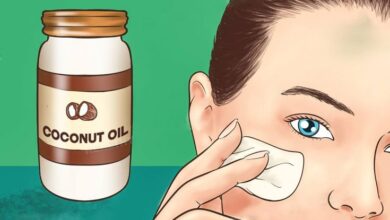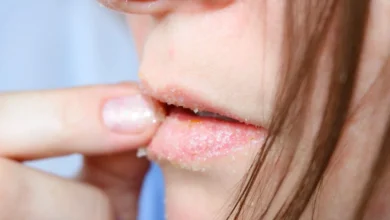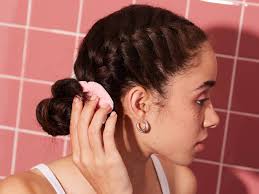2. Enhancing Volume and Texture
Another lesser-known benefit of baking soda shampoo is its ability to add volume and texture to fine or limp hair. If you struggle with flat hair that lacks body, baking soda can help lift and volumize it. When baking soda is used on the hair, it alters the cuticle layer, making it more textured and giving it a fuller appearance. This effect can be especially beneficial for those with fine, straight, or thin hair types that are prone to looking flat and lifeless.
Baking soda’s alkalinity slightly raises the hair cuticle, which creates a more voluminous texture. While this may sound counterproductive, especially when the goal is to keep hair smooth, the raised cuticle allows for better grip, which can give hair a thicker appearance. Here’s a guide to using baking soda shampoo for volume:
- Step 1: Mix half a tablespoon of baking soda with one tablespoon of your regular shampoo. This dilutes the baking soda and makes it easier to work through your hair.
- Step 2: Apply the mixture to your hair, focusing on the roots and scalp. Massage it in circular motions, ensuring even distribution.
- Step 3: Rinse thoroughly to avoid any residue, then follow with a lightweight conditioner on the ends of your hair. Avoid conditioning the roots, as this can weigh the hair down.
- Step 4: Once your hair is dry, you’ll notice increased volume and a thicker feel.
When used in moderation, baking soda can improve hair texture and fullness without the need for additional styling products or heat tools. However, be cautious with this method; using baking soda too frequently can dry out hair, so it’s best reserved for occasional use, such as before a special event or when your hair feels particularly weighed down.
Tips and Precautions for Using Baking Soda Shampoo
While baking soda has impressive benefits for the hair, it is important to approach its use with caution. Baking soda has an alkaline pH of around 9, which is significantly higher than the natural pH of hair (which ranges between 4.5 and 5.5). Using baking soda too frequently can disrupt the scalp’s acid mantle, potentially causing dryness or irritation. Here are some tips to ensure safe and effective use:
- Limit Frequency: Use baking soda shampoo no more than once every 2-4 weeks. This will prevent overuse and keep your hair from becoming too dry.
- Follow Up with a pH-Balancing Rinse: After using baking soda, follow up with an acidic rinse, like diluted apple cider vinegar. This helps restore the scalp’s natural pH, closing the cuticles and reducing frizz.
- Test for Sensitivity: If you have a sensitive scalp, do a patch test before using baking soda shampoo. Apply a small amount to a less-visible area and wait 24 hours to ensure no irritation occurs.
- Avoid on Colored Hair: Baking soda may strip color-treated hair faster than regular shampoo. If you color your hair, consider using baking soda only on natural roots or consult your stylist for advice.
Final Thoughts
Baking soda shampoo is a versatile and affordable way to tackle common hair issues like product buildup and lack of volume. Its ability to deep-clean and add texture makes it a valuable tool in any hair care routine. However, it’s essential to use it wisely and sparingly, as overuse can lead to dryness. When used correctly, baking soda shampoo can leave your hair feeling fresher, lighter, and more voluminous, giving you salon-worthy results right at home.




